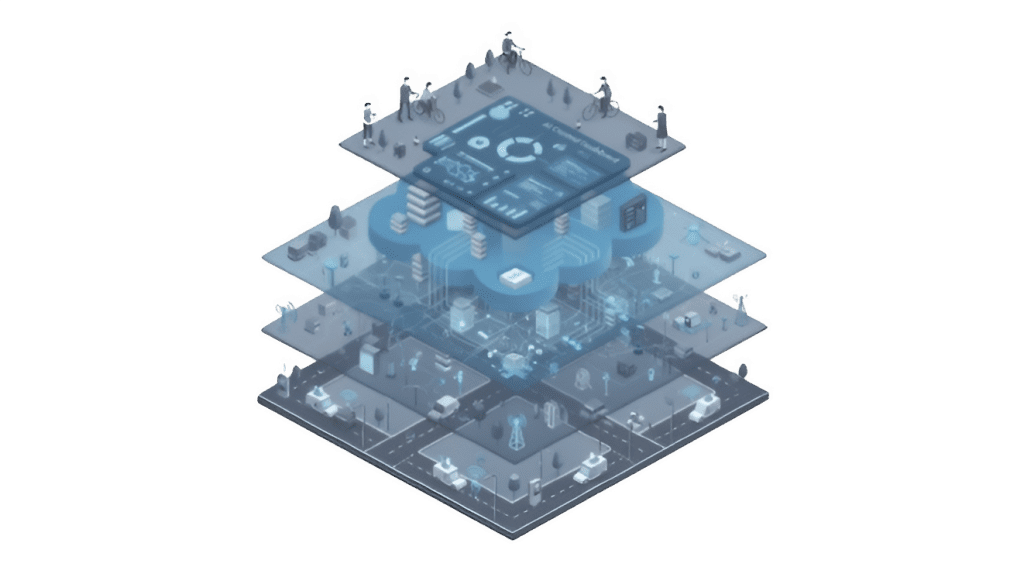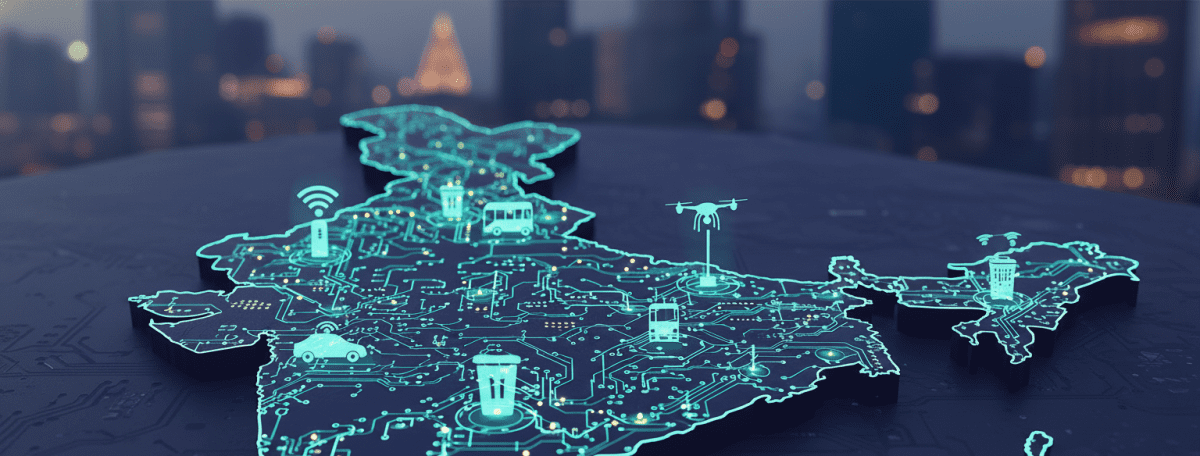The Next Urban Revolution
India’s cities are expanding at a speed that’s almost unprecedented — not just with towering skyscrapers and new metro lines, but also through digital networks that think and respond. Beneath the surface of glass and concrete, there’s a quiet revolution happening: IoT-driven infrastructure is transforming how our cities function every single moment.
From streetlights that automatically dim to smart meters that provide real-time energy data, this new wave of technology—Smart Cities 2.0—goes far beyond just digital applications. It’s all about connecting the vital elements that keep a city thriving.
In the coming weeks, we’ll delve into how connected streetlights, smart meters, and intelligent systems are paving the way for India’s future.
What Exactly Is a Smart City 2.0?
The initial smart cities of the 2010s were primarily focused on digitization — think apps for parking, CCTV monitoring, and citizen dashboards. That was Smart City 1.0.
Now, Smart City 2.0 marks a significant shift towards autonomous operations. Every device—be it a streetlight, meter, or waste bin—acts as a sensor node, feeding real-time data into citywide systems.
Picture each part of a city functioning like a neuron in a vast brain: learning, optimizing, and making quick adjustments. What’s the outcome?
- Less energy wasted
- Faster response times
- Improved public safety
- Predictable infrastructure costs
The Hidden Power of IoT in Urban Operations
IoT isn’t just about connecting machines; it’s about coordinating intelligence.
Here’s how it subtly drives urban transformation:
| Function | IoT Example | Impact |
| Automation | Streetlights adjust brightness automatically | Saves 50–60% power |
| Monitoring | Smart meters send real-time usage | Reduces manual reading costs |
| Predictive Maintenance | Sensors flag faults early | Prevents outages |
| Resource Optimization | AI balances energy grids | Cuts waste, increases uptime |
IoT establishes an operational layer over the city—a quiet network that learns and adapts.
Why India Is Ready for Smart City 2.0
By 2036, we can expect over 600 million people to call Indian cities home. To accommodate this growing population, municipalities will need to embrace automation rather than relying solely on manpower.
The Government of India’s Smart Cities Mission has already rolled out pilot IoT projects in more than 100 cities, from Bhopal to Bhubaneswar.
What’s exciting about 2025 is the scale of these initiatives:
With 5G and LoRaWAN connectivity, controlling devices remotely is now a reality.
Cloud platforms are bringing together thousands of IoT sensors in one centralized system.
Affordable hardware, priced between ₹2,000 and ₹5,000 per node, paves the way for widespread adoption.
Smart Cities 2.0 is no longer just a concept — it’s becoming the standard for effective urban governance.
Streetlights and Smart Meters — The Core of Smart Infrastructure
When it comes to smart technologies, connected streetlights and smart meters are truly the backbone of cities that are ready for the future.
Connected Streetlights:
– Slash city lighting costs by up to 60%
– Allow for remote control of on/off settings and brightness levels
– Send maintenance alerts without needing a field inspection
Smart Metering Systems
– Offer real-time insights into energy consumption
– Instantly detect leaks and theft
– Enhance energy planning and load balancing
Together, these systems transform electricity grids into responsive, intelligent ecosystems. They also lay the groundwork for future smart applications, such as EV charging and adaptive traffic management.
(More details in our next blog: How Connected Streetlights Are Slashing City Power Bills by 60%)

Building Smarter Cities, One Connection at a Time
The path to Smart Cities 2.0 isn’t about starting from scratch — it’s about enhancing what we already have.
By retrofitting our existing infrastructure with IoT devices, we can see quick returns on investment: think lower maintenance costs, fewer outages, and happier citizens.
Cities like Pune, Surat, and Indore are already making strides by integrating connected lighting and smart meters on a large scale — demonstrating how data and thoughtful design can work together to create sustainable urban living.
A Connected India Is a Smarter India
Smart Cities 2.0 are popping up all around us, fueled by IoT systems that can think, sense, and act on their own.
In the weeks ahead, we’ll dive deeper into these real-world innovations and take a closer look at how connected streetlights and smart meters are transforming Indian cities into more efficient, safe, and sustainable places to live.

